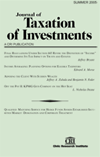Strategies for Private Foundation Planning
Author: Richard M. Horwood.; John R. Wiktor.
Source: Volume 26, Number 04, Summer 2009 , pp.83-91(9)

< previous article |next article > |return to table of contents
Abstract:
Private foundations are subject to a number of complicated rules that prohibit and tax various forms of self-dealing. Additionally, contributions to private foundations are subject to a number of restrictions relating to the income tax deductibility of contributions. Because of these complicated rules, it used to be that private foundations were considered to be a charitable giving technique used only by the wealthy. However, that is no longer the case. Today many donors are organizing private foundations with initial contributions of less than $1 million. With the increase in the number of private foundations being organized, attention has been focused on the complicated self-dealing and income tax deductibility rules. Although those rules are important and should be given much attention, donors and their advisors must not overlook one fundamental issue: What is the appropriate legal entity to use in structuring the private foundation? When organizing a private foundation, it is essential to consider a number of important factors to determine the optimum structure for the particular donor. The appropriate choice of legal entity will be a significant step in furthering the donor’s goals.Keywords: 501(c)(3); non-profit corporations; trusts
Affiliations:
1: Horwood Marcus & Berk Chartered; 2: Horwood Marcus & Berk Chartered.